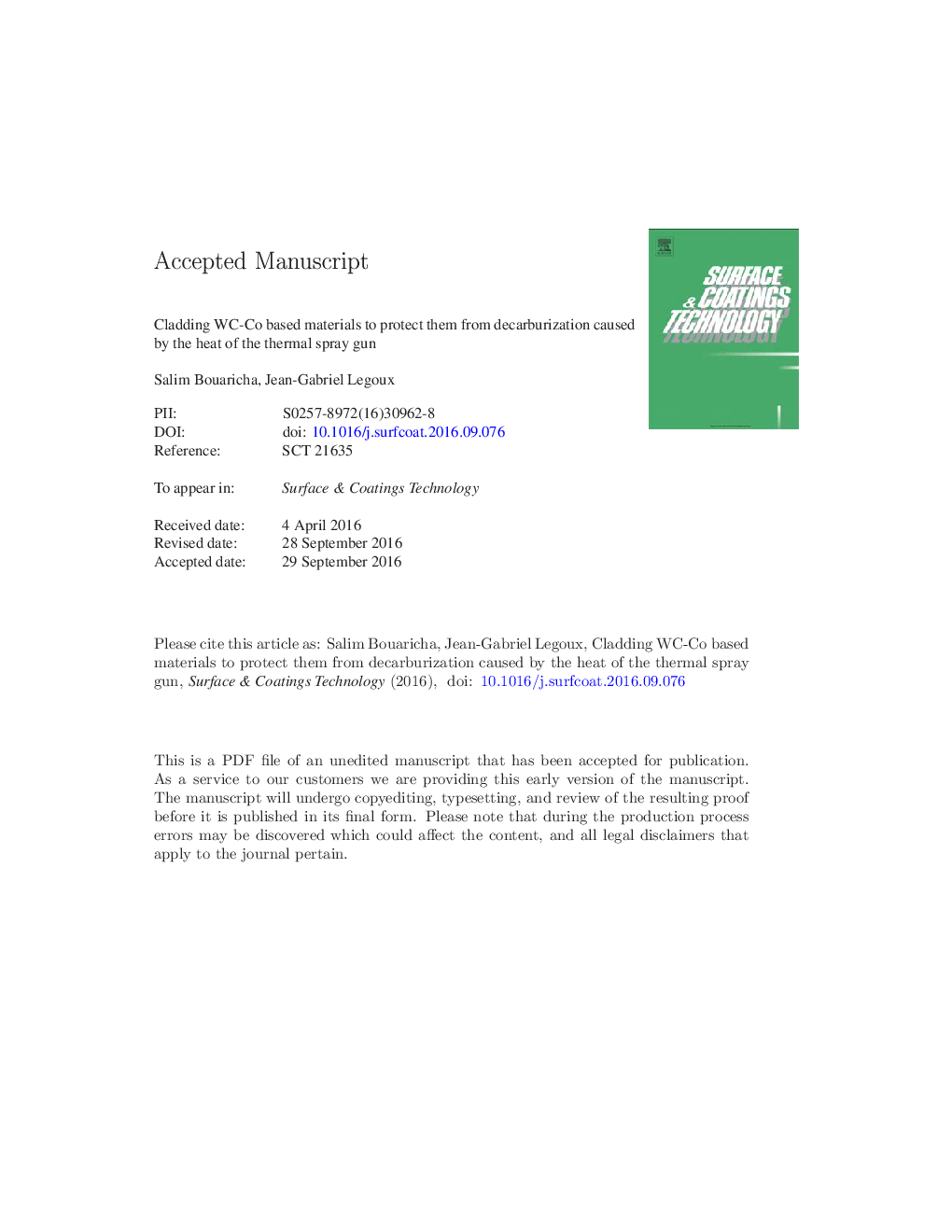| Article ID | Journal | Published Year | Pages | File Type |
|---|---|---|---|---|
| 5465271 | Surface and Coatings Technology | 2017 | 43 Pages |
Abstract
Two types of commercial cermet powders WC-10Co-4Cr and nanostructured WC-12Co were modified by cladding thin layers of magnesium oxide onto their surface. The objective was to protect the WC phase from decarburization that regularly results from thermal spray. As-received and cladded powders were deposited by using the HVOF thermal spray technique. The coatings features were investigated by using several characterization techniques. The results show that original spray powders were thermally protected by the layer of magnesium oxide clad on their surface that acts as a sacrificial material. This cladding material vanished partially endothermically by sublimation, fusion followed by evaporation, by endothermic reaction with the spraying atmosphere or acted as refractory material and did not much affect the original material. Thus, less heat was transferred from the flame onto original powders, and coatings produced following this process presented less degradation (conservation of the initial phases and structures) which was reflected by better mechanical properties.
Keywords
Related Topics
Physical Sciences and Engineering
Materials Science
Nanotechnology
Authors
Salim Bouaricha, Jean-Gabriel Legoux,
